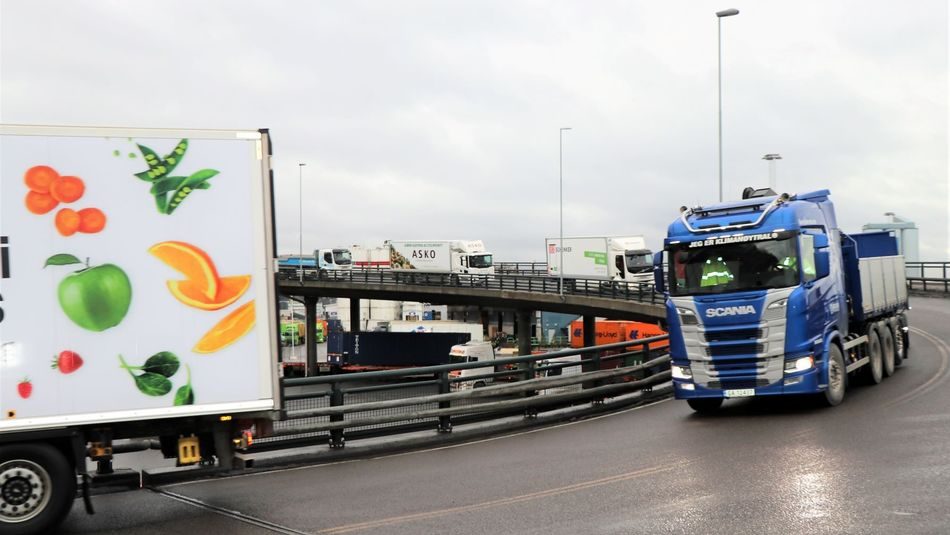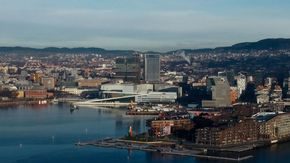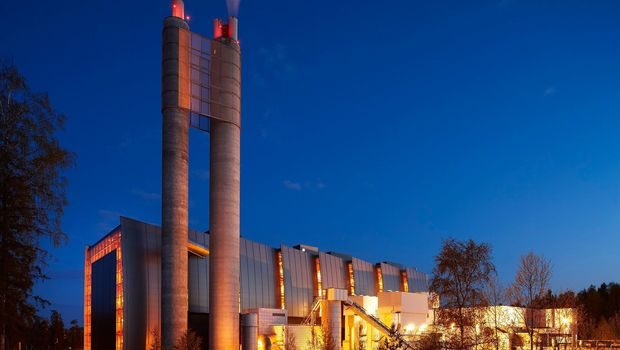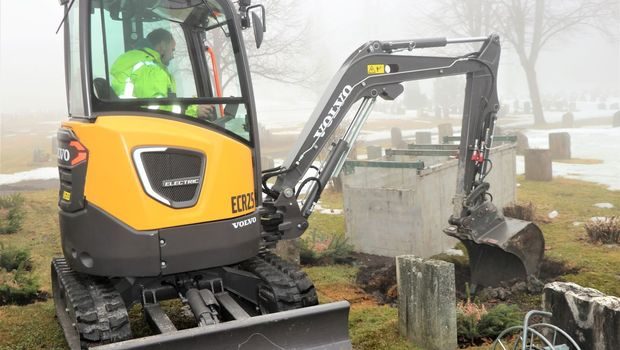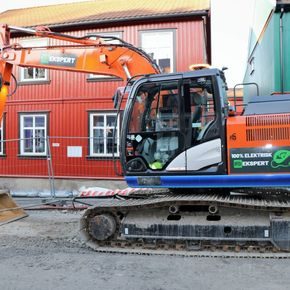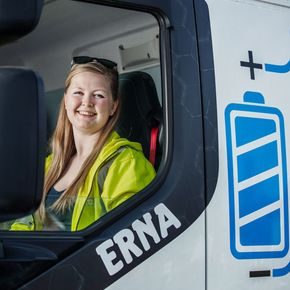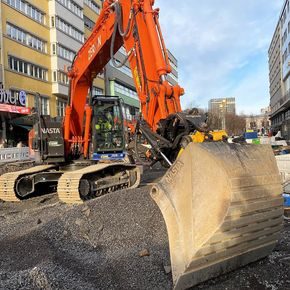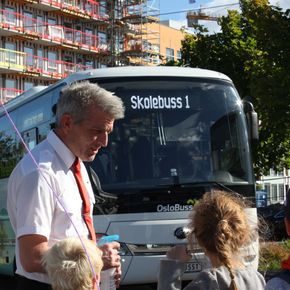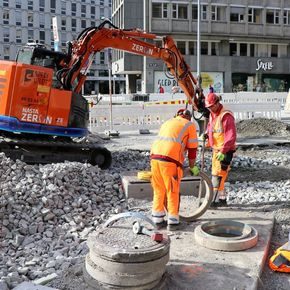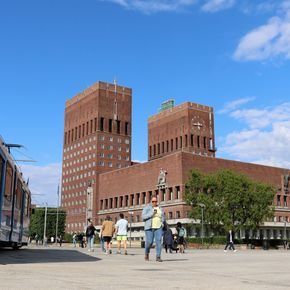
New pedestrian street brings new life to Oslo city centre
Olav Vs gate used to be a turnaround zone for Oslo’s taxis. Now, one of the widest promenades in Oslo is upgraded, creating a new pedestrian street with abundant space for people and businesses.
“We are particularly proud of two achievements with Olav Vs gate. One is that we have developed a new pedestrian street in the centre of Oslo. The other is that we have achieved this almost without emissions,” explains Karin Dalberg, Project Manager at the Agency for Urban Environment.
The objective behind the upgrade to Olav Vs gate was to create a new urban environment that would appeal to both locals and visitors. To achieve this, the upper section of the street has been transformed into a spacious pedestrian street. The taxi rank outside Saga cinema has been relocated to the southern block along with Oslo’s first charging station for electric taxis – and the parking spaces have been replaced with goods delivery bays and disability parking.
The entire street was excavated to create a new city space with no traffic. Old materials were replaced, the underground infrastructure was upgraded, and new trees were planted. The result is a robust street that can be enjoyed for many years to come.

Project Manager Karin Dalberg is looking forward to seeing the new trees bud in the spring.
Eco-friendly with electrical construction site
The City of Oslo has a clearly defined climate strategy which states that by 2030, greenhouse gas emissions shall be down by 95 percent compared to 2009 levels. To achieve this goal, there are specific targets for emission reduction. By 2025, all construction sites on behalf of the municipality shall be emission-free. The upgrade in Olav Vs gate has been a pilot project for zero emission site operation, and is an important step towards the transition which must come to the contruction industry. .
Since construction began in September 2019, the site operation on Olav Vs gate has mainly utilised electrical machinery. Some processes required traditional machinery in order to ensure the necessary quality, such as the welding of membranes. Overall, the electrical machines perform equivalently to the diesel-operated machines, but produce both less noise and no on-site pollution.
“The pilot project in Olav Vs gate has produced valuable experience for future projects, both for contractors, grid companies, municipalities and machine suppliers,” explains Marianne Mølmen, Project Manager for zero-emission construction sites.
“The City of Oslo has willingly accepted its responsibility for bringing about the necessary changes in the emission levels from the building and construction industry, so that we can enjoy a greener city,” she adds.
More space and new trees
The upgrade has improved the area’s accessibility. The pavements are now wider, meaning there is more space for social interactions. The extra space is also much appreciated by businesses located on the street.
“We are delighted to have a pedestrian street here. We can now provide seats outdoors, and this is a huge bonus both for us and our customers. It’s also much more pleasant to have a pedestrian street on our doorstep,” says Karoline Kalfoss, who works at Kaffebrenneriet café at Saga cinema.
12 new trees have been planted along one side of the new pedestrian street.

It is important to take measures to prevent flooding in large, central streets. A new stormwater basin has therefore been installed to ensure that the street does not flood during periods with high precipitation.
“We have made sure there is plenty of space for the roots under the granite, so that the trees will remain a green addition to city life for many years to come. They have been planted in beds with integrated watering systems, and are ready for the spring. In total, we have laid approx. 300 cubic metres of soil,” explains Project Manager Karin Dalberg.
Important factors to keep in mind when planting trees in the city centre are distance to buildings, visibility from façades and space for traffic and pedestrians under the trees. The new vegetation has been planted on the eastern side of the new street, providing an open line of sight from Johanne Dybwads plass and down to the fjord.

The climate budget ensures reduced emissions from traffic, construction and waste incineration
How it was done
In order to gain an overview of the available options and technical solutions for an emission free construction site, the project began by performing extensive market research. In Norway, electricity consumption is considered near-zero-emission, as it mainly originates from hydropower. Therefore the use of electric construction machines and equipment was considered the best option to achieve the goal of zero emission construction site. Through market dialogue the project gathered information from the providers of machines and equipment, as well as from the local grid operator in order to ensure sufficient power supply to the site.
At the time, the supply of electric construction machines was low, but a few existed, and it was possible to acquire electric excavators and wheel loaders. However, there was only a limited number available and very few construction companies had their own electric machines. In order to ensure the few existing machines were available, the project decided to first enter into an agreement with an equipment rental service to secure the necessary machinery.

Next the project entered into a separate agreement with a construction company that would operate the site, using the electric machines made available through the rental service. Through the rental service agreement, the project had access to the following machines:
- Large (16-ton) excavator – battery + cable operated
- Medium (8-ton) excavator – battery electric
- Wheel loaders – battery electric
The project was also able to secure the rental of a larger 25-ton battery electric excavator for a period from two separate sources.
Reduced emissions
By using electric construction machines, the project has saved 35 000 litres (9 250 US gallon) of diesel and 92 500 kg of CO2 equivalents (CO2e), compared to the use of regular machinery. The pilot project proved that using electric construction machines is possible for almost all operations.
The electric excavators have overall proved to be the most successful of the machines, as these have performed equally to their diesel-operated counterparts. Provided there is a system for charging during any breaks, as well as during lunch and night time, the battery capacity is sufficient to function a full working day. Additionally, the reduced noise levels enable better on-site communication, which in turn improves health and safety for the labourers.

Electric excavators may become the norm in Oslo
The project also utilised electric wheel loaders. These performed adequately at lightweight tasks, but for heavy loading and lifting, they were insufficient. The project therefore utilised a wheel loader operating on HVO diesel 100 (Hydrotreated Vegetable Oil) throughout the project period for the heaviest tasks.
- Report on the zero emission construction site, read the summary in English!
Environmental criteria for procurement by the City of Oslo
As with all other projects for the City of Oslo, the supplierwas selected through a procurement process. The supplier with the best tender, based on the allocation criteria established by the Agency for Urban Environment, won. The competition for this project was announced before the City of Oslo adopted its stringent environmental requirements for building and construction procurements in 2019. Nevertheless, environmental performance was included in the allocation criteria for Olav Vs gate.
The City of Oslo plays a very important role as the purchaser of products and services, and aims to influence market developments aby demanding sustainable materials and solutions.
“We continue to work systematically to reduce the environmental impact of our projects moving forward, and how we can focus on reducing CO2 emissions from the materials offered and utilised in the future,” explains Director of the Agency for Urban Environment, Gerd Robsahm Kjørven.
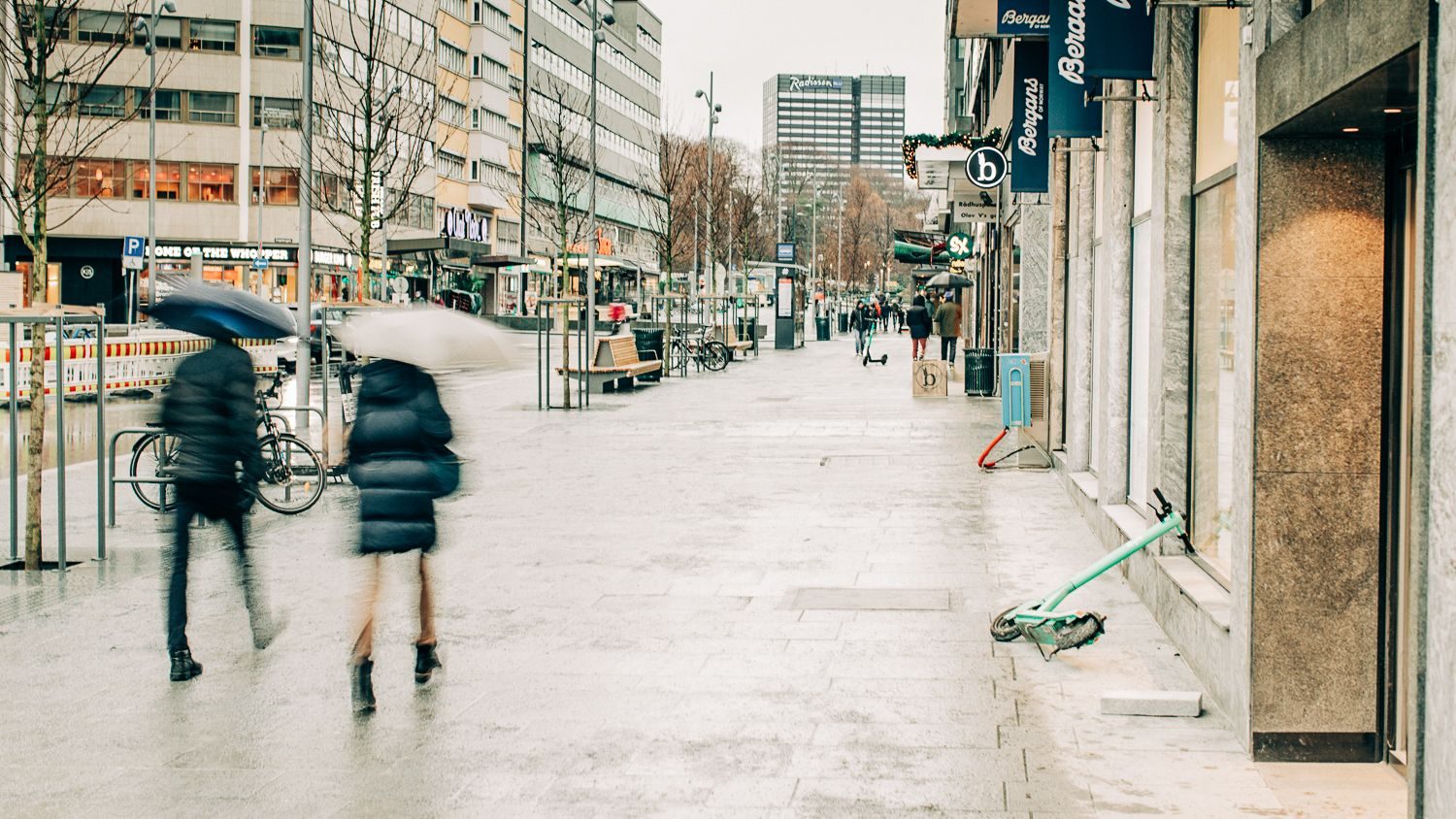
Olav Vs gate stretches from the National Theatre to Rådhusplassen, and is home to numerous businesses. It now has plenty of space for pedestrians, outdoor seating for cafés and restaurants and events.
Building for the future
The City of Oslo aims to create an improved urban environment in the city centre, prioritising pedestrians and cyclists over vehicles. The upgrade to Olav Vs gate is in line with this aim.
From 2020, the core zone for improved urban environment will be extended to Tøyen and Grønland, in addition to the city centre area within Ring 1.

